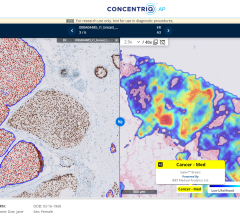
January 20, 2017 – A new study by the Harvey L. Neiman Health Policy Institute evaluates characteristics of non-research industry payments to radiologists and their potential impact as drivers of medical imaging utilization. The report is published online in the Journal of the American College of Radiology (JACR).
The researchers used 2014 Centers for Medicare and Medicaid Services (CMS) Open Payment data to evaluate the relationship between non-research related payments to radiologists and, at the state level, the frequency of radiologists supported by industry versus average per beneficiary Medicare imaging spending.
“Our results showed that non-research industry payments to radiologists were overall infrequent and relatively small,” said Nima Kokabi, M.D., a vascular and interventional radiology fellow at Yale University’s School of Medicine. “In 2014, 2,008 radiologists received non-research related payments from industry, representing only 5.2 percent of all 38,857 radiologists nationwide.”
Kokabi and his colleagues found that although nationally 5.2 percent of all U.S. radiologists received non-research related payments from industry, considerable geographic variation was observed at the state level. The range spanned from 0 percent in Vermont to 12.9 percent in Washington, D.C. The researchers also found significant variation in Medicare Part B fee-for-service imaging spending per beneficiary across the country. They discovered that New York and Nevada had the highest average per beneficiary Medicare Part B spending for imaging, whereas Ohio and Virginia had the lowest.
“At the state level, we found no association between average per beneficiary Medicare imaging spending and the proportion of non-research funded radiologists in each state,” said Kokabi. “Similarly, no correlation was identified between average per beneficiary Medicare imaging spending and the average non-research transfer amount to radiologists in each state.”
“Our healthcare delivery system continues to change rapidly into one that embraces transparency and value-based payments,” noted Richard Duszak, M.D., FACR, professor and vice chair for health policy and practice in the department of radiology and imaging sciences at Emory University and affiliate senior research fellow at the Harvey L. Neiman Health Policy Institute. “An increasing body of literature suggests that industry payments influence physician utilization behavior, but that does not appear to be the case in diagnostic radiology. As such, ‘one size fits all’ reporting systems and metrics cannot be applied to all specialties.”
For more information: www.neimanhpi.org


 November 11, 2025
November 11, 2025 









